LG Energy Solution is developing sodium-ion battery technology with excellent high-rate characteristics and low-temperature output, while achieving differentiated cost competitiveness. Starting with 12V products, we aim to secure a leading position in the ESS and future mobility
R&D
Future Battery
LG Energy Solution is accelerating the development of an innovative next-generation battery portfolio powered by cutting-edge technologies. By developing safer, more efficient, high-performance, and cost-effective next-generation batteries, we aim to bring the future mobility era closer.
Sodium-ion Battery
Sodium-ion batteries use sodium, which is abundantly available on Earth, instead of lithium, thereby reducing raw material costs while delivering outstanding high-rate performance and low-temperature output.
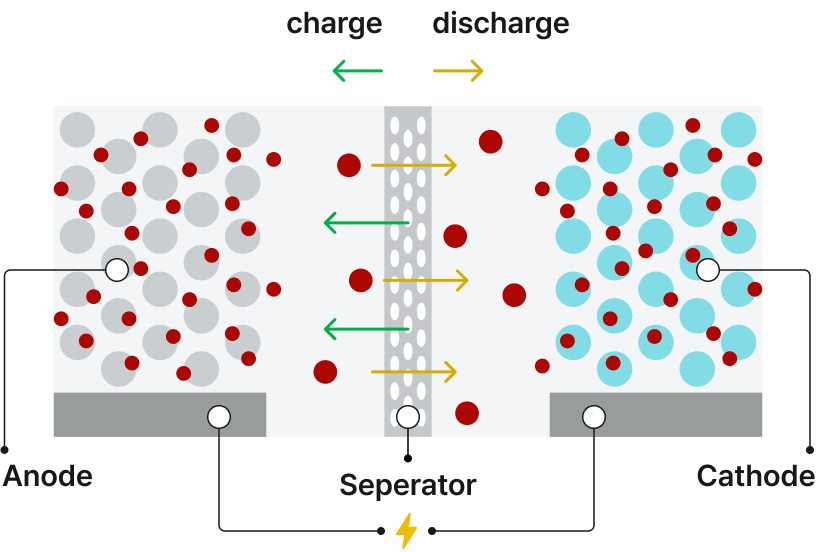
Key Features of Sodium-Ion Battery Technology
(Commercialization planned for 2027)

High Cost Competitiveness
Achieves cost advantage by using sodium, priced at less than 1/100 of lithium

Excellent High-Rate Performance and Low-Temperature Output
Incorporates hard carbon materials and sodium-ion electrolytes to deliver outstanding high-rate characteristics and low-temperature output

Sustainable Materials
Ensures sustainability by utilizing globally abundant sodium resources and adopting a cobalt-free composition
Expanding Applications Based on Excellent High-Rate Performance and Low-Temperature Output
By leveraging the outstanding high-rate performance and low-temperature output of sodium-ion batteries, LG Energy Solution aims to achieve differentiated cost competitiveness and expand from 12V products to the ESS and affordable EV markets.
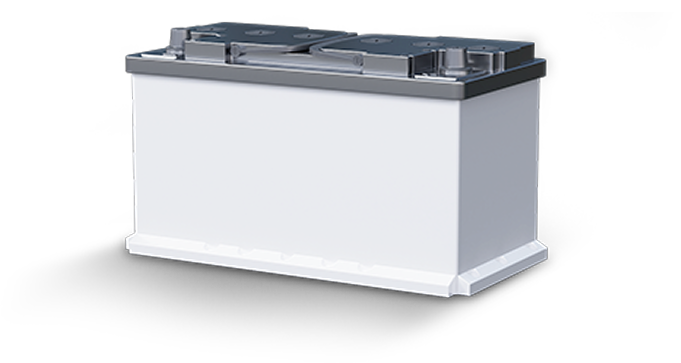
12V Battery

Affordable EV

Energy Storage System
All-Solid-State Battery
LG Energy Solution is developing high-performance sulfide-based all-solid-state battery technology with high energy density, safety, and excellent high-temperature durability, with plans for rapid commercialization. Beyond premium high-performance EVs, its applications will expand to electric ships, ESS, and other industries, opening new possibilities for next-generation batteries.
All-solid-state batteries are secondary batteries that use solid electrolytes between the cathode and anode, offering lower risk of combustion, higher energy density, and the ability to achieve high capacity.

Key Features of All-Solid-State Battery Technology
(Commercialization planned for 2029)

Enhanced Safety
Improved safety and thermal runaway control through the application of solid electrolytes

High Energy Density
Achieves high energy density by applying an anodeless (no-anode) design

Fast Charging
Enables ultra-fast charging in under 20 minutes based on excellent high-temperature durability
Expanding Applications Based on Safety and High-Temperature Durability
With the superior safety and high-temperature durability of all-solid-state batteries, safety can be enhanced at the system level while simplifying thermal management systems. Leveraging these advantages, applications will expand from high-performance premium EVs to electric ships and ESS.

High-Performance EVs

Electric Vessel

Energy Storage System
Bipolar Battery
LG Energy Solution also aims to deliver more efficient and innovative battery solutions for future mobility by advancing bipolar battery technology, which enables high-voltage systems with simplified structures, thereby improving cost competitiveness and significantly extending driving range.
Bipolar batteries achieve high voltage through series connections within the cell, thereby enhancing driving range and cost competitiveness at the battery system level.

Key Features of Bipolar Battery Technology
(Commercialization planned for 2028)

Improved Cost Competitiveness
Maximizes cost competitiveness by applying low-cost materials, implementing high-energy cells, and simplifying processes and pack structures

Enhanced Space Utilization
Simplifies internal pack structures through a large-area bipolar design, improving space efficiency.

Strengthened Safety
Improves safety through the application of semi-solid electrolytes
Enhanced Space Utilization with Differentiated Cell Structure
Bipolar batteries enable high-voltage system implementation with a simplified structure, improving cell space utilization at the pack level while reducing the number of components. This simultaneously enhances energy density and reduces manufacturing costs. Building on these strengths, LG Energy Solution plans to expand applications beyond affordable EVs to commercial vehicles such as electric trucks, where high-voltage implementation and space efficiency are critical.
Bipolar Battery Serial Connection Structure
Lithium-ion BatteryParallel Connection Structure

Vertically Stacked Cell Blocks
Bipolar BatterySerial Connection Structure
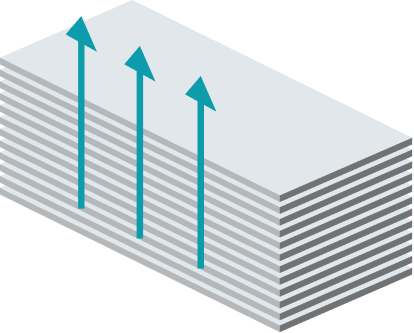
Horizontally Stacked Cell Blocks
Applications
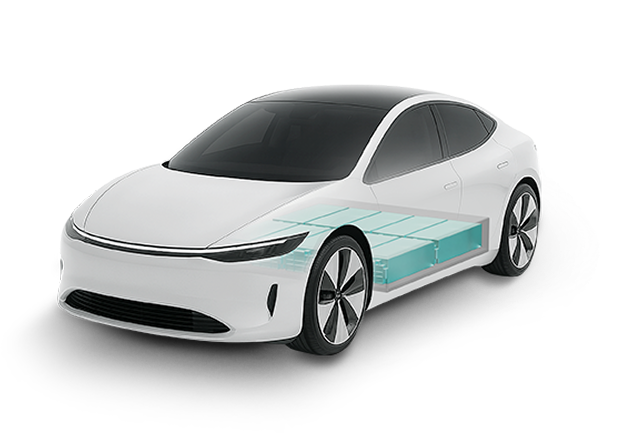
EV

Electric Truck
Lithium-Sulfur Battery
LG Energy Solution is advancing the commercialization of lithium-sulfur battery technology, which delivers high energy density per unit weight, making it lightweight yet capable of strong instantaneous power output. This technology will drive innovation in future modes of transportation such as aircraft and Urban Air Mobility (UAM).
Lithium-sulfur batteries use lightweight materials such as sulfur–carbon composites for the cathode and lithium–metal for the anode, achieving more than twice the energy density of conventional lithium-ion batteries.
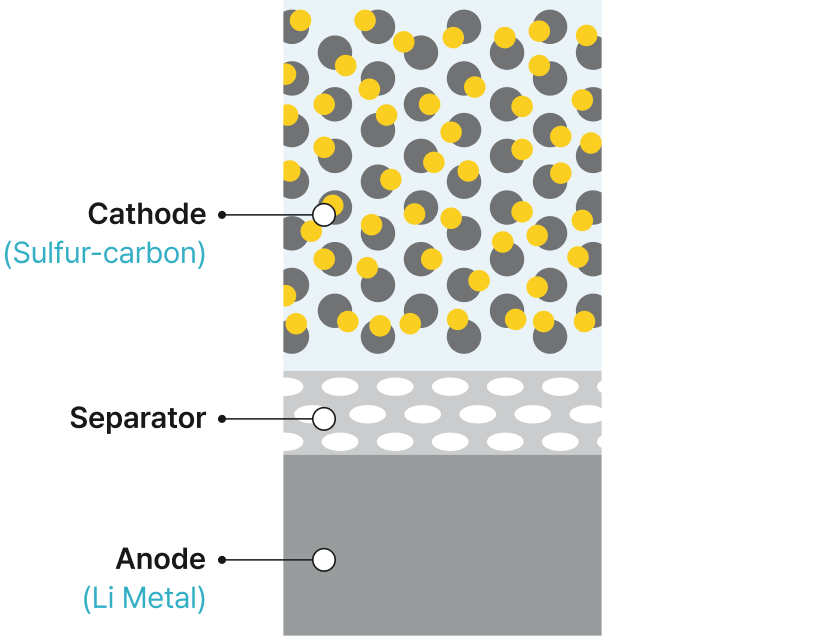
Key Features of Lithium-Sulfur Battery Technology
(Commercialization planned for 2029)

Enhanced Energy Density per Unit Weight
More than twice the gravimetric energy density of lithium-ion batteries, enabling significantly greater storage capacity per unit weight

Outstanding Lightness
Applies lightweight materials such as sulfur and carbon instead of metal oxides for the cathode

High Cost Competitiveness
Uses abundant and low-cost sulfur to reduce battery manufacturing costs
Pioneering New Markets with Lightness and Cost Competitiveness
With superior lightness and cost competitiveness, lithium-sulfur batteries will first be applied to high-altitude unmanned aerial vehicles (UAVs) and UAM, and later expand into the broader aviation mobility market with significant growth potential, leading the electrification of future transportation.
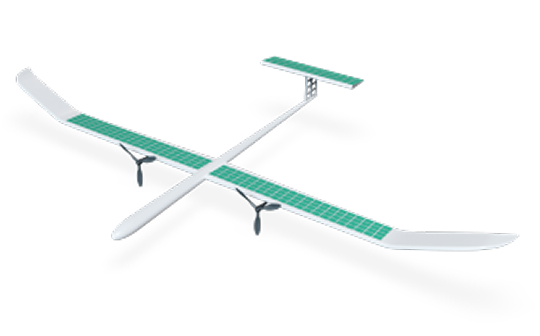
High-Altitude UAV

UAM
Successful Flight Test of Lithium-Sulfur Powered High-Altitude UAV (2020)
In 2020, LG Energy Solution (then LG Chem) successfully demonstrated the potential of lithium-sulfur battery technology by powering a high-altitude, long-endurance solar UAV developed by the Korea Aerospace Research Institute. The test flight lasted 13 hours, including 7 hours in the stratosphere at an altitude of 12–22 km.
Enter Your Information to Download
- Items Collected : Name, Email, Company Name
- Purpose : Provide product catalogs, respond to customer inquiries
-
Retention Period : 1 year from collection, then destroyed
You may refuse to consent; however, in such cases, content may not be provided.
Consent to Collection and Use of Personal Information
LG Energy Solution collects and uses personal information as follows for the purpose of providing downloads and responding to inquiries.
-
Items Collected
Name, Email, Company Name
-
Purpose of Use
Consent to Receive Marketing Information
-
Method of Provision
Email
-
Retention & Use Period
Retained for one (1) year from the date of collection, then destroyed
-
Right to Refuse and Disadvantage
You may refuse to provide consent; however, in such cases, access to certain content may be restricted.
Consent to Receive Marketing Information
LG Energy Solution uses personal information to provide useful information such as promotions and newsletters:
-
Items Collected
Name, Email, Company Name
-
Purpose of Use
Consent to Receive Marketing Information
-
Method of Provision
Email
-
Retention & Use Period
Retained for one (1) year from the date of collection, then destroyed
-
Right to Refuse and Disadvantage
You may refuse to consent; however, in such cases, content may not be provided.
Consent to Overseas Transfer of Personal Information
LG Energy Solution uses cloud systems to manage your information securely. Accordingly, your personal information may be transferred overseas.
-
Recipient
Microsoft
-
Country
United States
-
Items Transferred
Name, Email, Company Name
-
Purpose of Transfer
Data storage and system operation
-
Method of Transfer
Transmitted over network immediately upon collection
-
Retention & Use Period
Retained for one (1) year from the date of collection, then destroyed
-
Right to Refuse and Disadvantage
You may refuse to consent; however, in such cases, content may not be provided.
Download
이메일 무단 수집 거부

본 홈페이지에 게시된 이메일 주소가
자동 수집되는 것을 거부하며,
이를 위반 시 정보통신망법에 의해
처벌됨을 유념하시기 바랍니다.
불법 대응 센터
http://www.spamcop.or.kr


